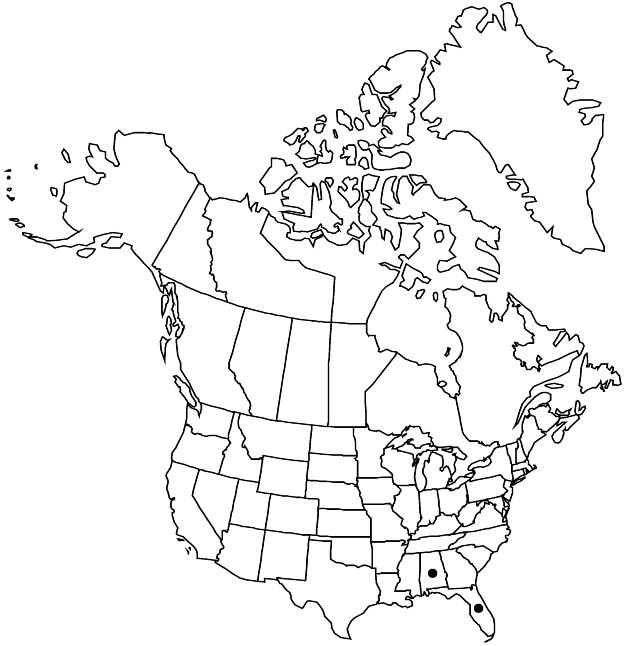Crataegus alabamensis
Bot. Gaz. 30: 342. 1900.
Shrubs or trees, 50–60 dm, branches ± weeping. Stems: twigs: new growth densely tomentose, 1-year old dark gray, older gray, ± stout; thorns on twigs usually sparse or absent, ± recurved, 1-year old dark blackish gray, slender, 2–3 cm. Leaves: petiole slender, length 20–30% blade, pubescent, glandular; blade broadly oblong to cuneate, 2–3 cm (at anthesis, larger mature), ± thick, firm, base evenly tapered, lobes 0, margins crenate-serrate, veins 3–5 per side, adaxially shiny mature, apex ± flattened to slightly cuspidate, abaxial surface pubescent only on veins, adaxial glabrate young. Inflorescences 3–6-flowered; branches tomentose; bracteoles linear, margins sessile-glandular, adaxially short-pubescent. Flowers 20–25 mm diam.; hypanthium tomentose; sepals narrowly triangular, margins glandular-serrate, abaxially appressed-white-pubescent in center of laminae, edges glabrate; anthers yellow; styles 3–5. Pomes red often very glaucous on drying, suborbicular to pyriform, 10–15 mm diam., glabrate; sepals spreading; pyrenes 3–5.
Phenology: Flowering Mar–Apr; fruiting Jul–Aug.
Habitat: Open woods
Elevation: 0–200 m
Discussion
Usually scarce, Crataegus alabamensis occurs in south-central Alabama and northern Florida near Tallahassee. The type location is recorded as being on clay soil near Montgomery, Alabama, a somewhat unusual habitat for this series.
Crataegus alabamensis, with its crenate-serrate leaves, resembles the larger forms of C. condigna (subser. Tenues); it is a more robust plant with much larger flowers and fruits. The type form has leaves particularly wide relative to length. The rare C. adunca has, unusually for this series, violet anthers.
Selected References
None.
